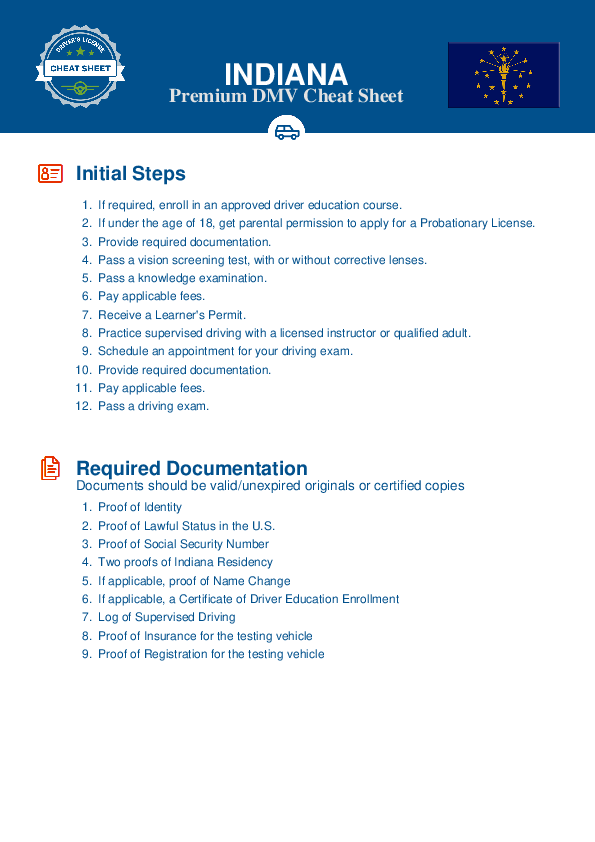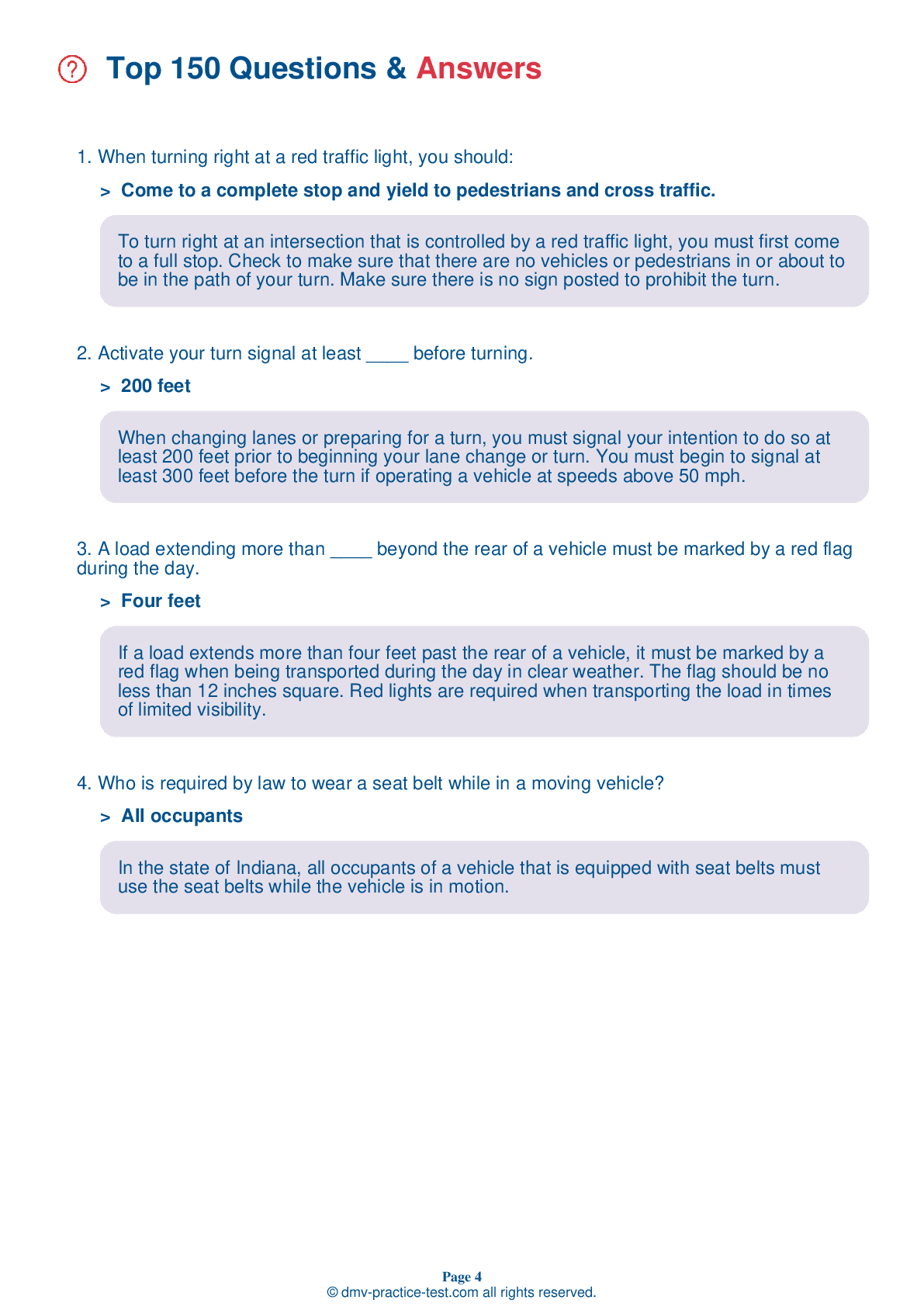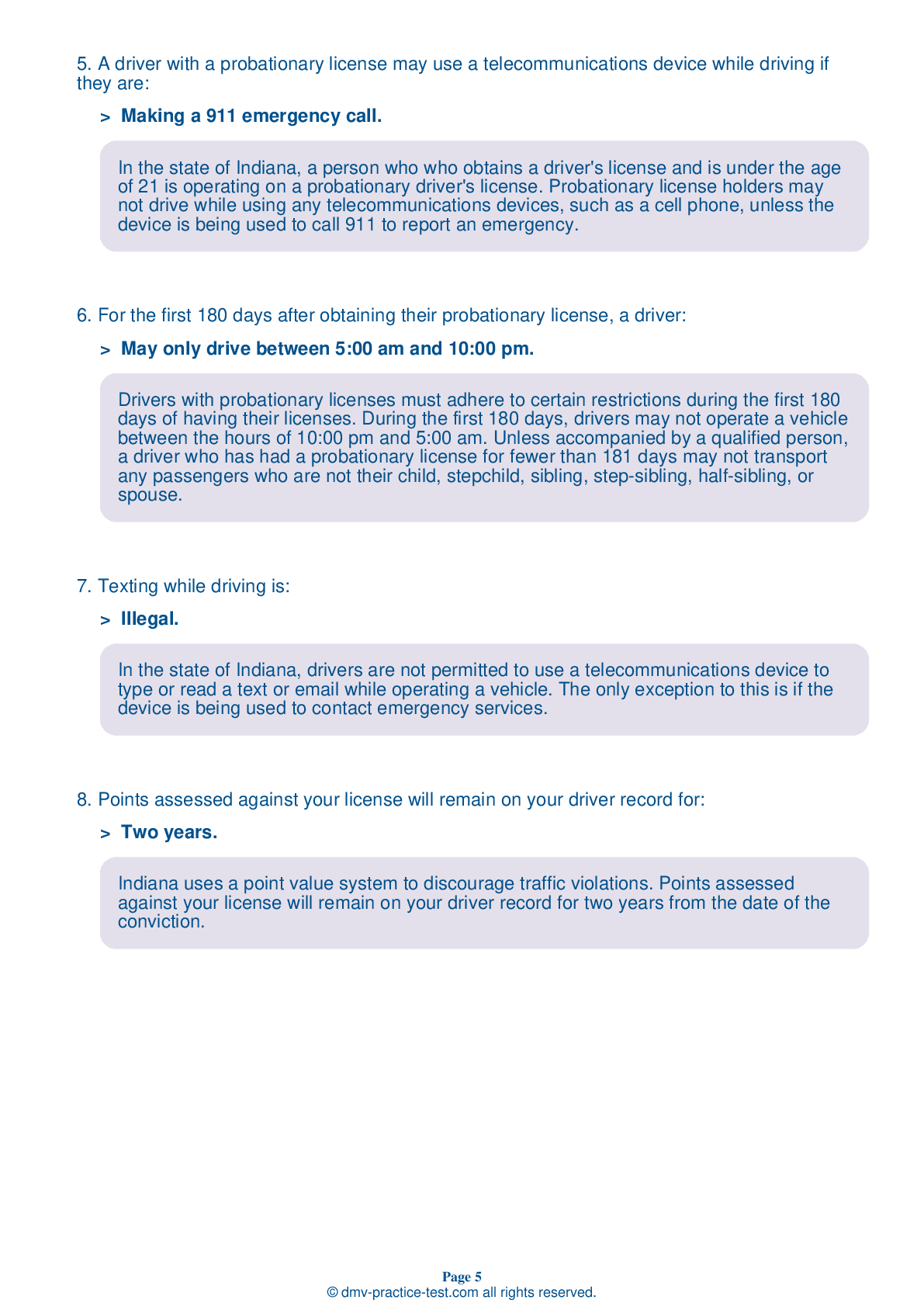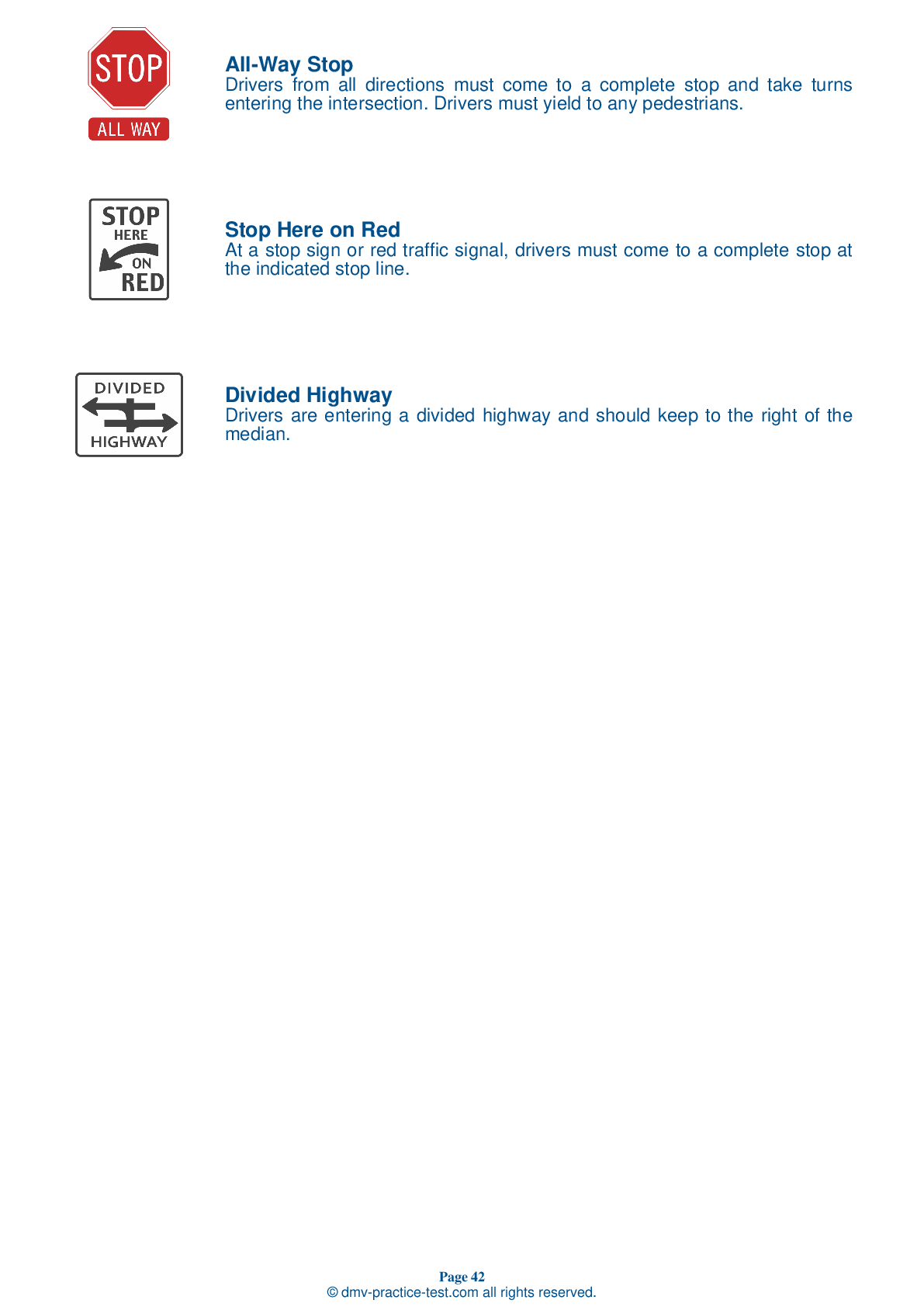FREE Indiana DMV Practice Test #5
This set of Indiana DMV practise tests has been updated for January 2025. It includes questions based on the Indiana Driver Handbook's most significant traffic signals and laws for 2025. Use actual questions that are very similar (often identical!) to the DMV driving permit test and driver's licence exam to study for the DMV driving permit test and driver's licence exam.
On the practise exam, each question gets a tip and explanation to help you remember the concepts. The written component of the official Indiana DMV test will include questions about traffic rules, traffic signs, and driving statutes, as well as information from the Driver Handbook.
To obtain a passing grade, you must correctly answer 44 of the 50 questions. Take our DMV practise exam to help you prepare for your Indiana instruction permit or driver's licence.
The DMV exam is available in several languages.
Using any kind of testing assistance will result in an automatic fail, and the DMV may take additional action against your driver's licence, so stay away from it.
1 . What does a flashing yellow traffic light mean?
A flashing yellow traffic light indicates that you should drive with caution.
2 . When the road is marked with a solid yellow line and a broken yellow line, with the broken line next to your lane, you may pass:
When there is a solid yellow line and a broken yellow line in the center of the road and the broken line is next to your lane, you may cross the lines to pass if there is no oncoming traffic.
3 . If you want to get off the freeway but you have missed your exit, you should:
If you miss your exit, you should take the next exit. Do not stop or back up on the highway, swerve across multiple lanes to try to make the exit at the last second, or cross over the median to turn around. All of these maneuvers are illegal and extremely dangerous.
4 . This road sign means:
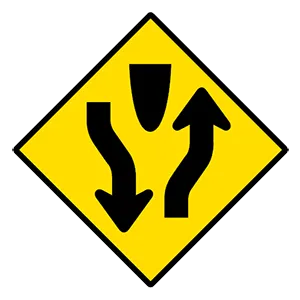
This sign indicates that a divided highway begins ahead. The road will split into two one-way roadways separated by a median or divider. You must keep to the right.
5 . When you are being tailgated:
If you are being tailgated by another driver and there is a right lane, move over to the right. If there is no right lane, wait until the road ahead is clear and then reduce your speed slowly. This will encourage the tailgater to drive around you. Never slow down abruptly as this will only increase the risk of your vehicle being hit from behind.
6 . To avoid collisions with vehicles in your blind spots, you should:
Before turning or changing lanes, turn your head and glance over your shoulder in the direction of your move to see if your blind spot is clear. Never rely on your mirrors alone.
7 . This sign means:
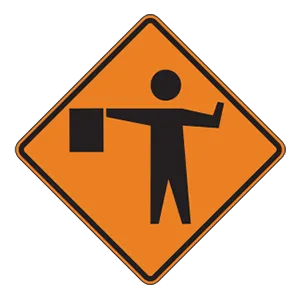
Construction zones pose dangers to both drivers and construction workers. Orange highway construction signs warn drivers to be careful when encountering construction zones. This sign tells drivers that a flagger is ahead and will be giving directions that should be followed.
8 . At dusk or on overcast days, you should:
At dusk or on overcast days, you must turn on your headlights. Dim your lights to their low beam setting when within 1,000 feet of an approaching vehicle and when within 500 feet of a vehicle that you are following. When driving in poor weather, always use your low beams.
Need Car Insurance? No problem!
Compare the best rates in Indiana and find a personalized policy that meets your needs.
1. Are You Currently insured ?
2. Married ?
3. Do you own your Home?
4. Do you have more than 1 car ?
5. Have you or a Family Member Honorably Served in U.S. Military ?
6. Your Name
7. Age
8. Zip code
IMPORTANT REMINDER:Auto Insurance is Mandatory to drive in Indiana. Get covered before you hit the road to avoid any fines.
Ranked by best match
